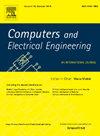Open-set security authentication: A novel CAN-bus recognition algorithm based on metric learning
IF 4
3区 计算机科学
Q1 COMPUTER SCIENCE, HARDWARE & ARCHITECTURE
引用次数: 0
Abstract
The CAN bus is a communication protocol that is commonly used in vehicular systems. Due to the lack of security mechanisms in controller area networks, they have become increasingly susceptible to attacks. While the physical-layer authentication can detect masquerade attacks by exploiting the uniqueness of the ECU features, such as signal voltage, to formulate the fingerprints, it suffers from low accuracy in large-scale CANs. In this paper, the study proposes an open-set physical-layer authentication scheme, which applies deep metric learning to improve the authentication accuracy for CANs with a large number of ECUs against both masquerade attacks and ranged attacks. Our scheme improves the triplet loss function to learn the latent feature representation of the known ECU signals. Experimental results verify the efficacy of our proposed scheme. The SigTLNet algorithm exhibits optimal recognition performance for both masquerade and remote attacks. It achieves average recognition rates of 99.59% for known nodes and 100% for unknown nodes during masquerade attacks, while for remote attacks, the rates are 99.30% and 100%, respectively. Additionally, experimental results reveal that SigTLNet provides shorter and more stable recognition times compared to existing algorithms.
求助全文
约1分钟内获得全文
求助全文
来源期刊

Computers & Electrical Engineering
工程技术-工程:电子与电气
CiteScore
9.20
自引率
7.00%
发文量
661
审稿时长
47 days
期刊介绍:
The impact of computers has nowhere been more revolutionary than in electrical engineering. The design, analysis, and operation of electrical and electronic systems are now dominated by computers, a transformation that has been motivated by the natural ease of interface between computers and electrical systems, and the promise of spectacular improvements in speed and efficiency.
Published since 1973, Computers & Electrical Engineering provides rapid publication of topical research into the integration of computer technology and computational techniques with electrical and electronic systems. The journal publishes papers featuring novel implementations of computers and computational techniques in areas like signal and image processing, high-performance computing, parallel processing, and communications. Special attention will be paid to papers describing innovative architectures, algorithms, and software tools.
 求助内容:
求助内容: 应助结果提醒方式:
应助结果提醒方式:


